With the possible exception of the Genesis Coupe, the Hyundai Veloster is the Korean maker’s best looking and most radically-design car to date. In fact, the Veloster most clearly and aesthetically captures Hyundai’s recently adopted ‘Fluidic Sculpture’ design language. Somewhere between coupe and family hatchback, the Hyundai Veloster seems to be designed as practical and youth-oriented but family-friendly mid-size hatch, pitched as a highly stylized but value-oriented player in the midst of a medley of coupe and family hatchbacks that include the Opel Astra, Ford Focus, Volvo C30, Renault Megane and VW-Scirocco – and of course it’s more conventional yet elegant styled 2-door Kia Cerato Koup cousin.
A sensible compact car in wolf’s clothing the Hyundai Veloster’s sheet metal is Hyundai at its best, with the busy waves and sculpted surfaces gelling together in a concise, muscular and well-proportioned manner, in a manner more focussed than its stable-mates. A fresh face from Korea, the Veloster’s hungry and aggressive trapezoidal fascia is framed with sharp stretched back lights and a muscular bumper featuring a seemingly carved second frame mirroring the grille. Blistered wheel-arches filled out with huge 18-inch alloy wheels and a clamshell bonnet complement the Veloster’s predatory snout, while a raked windscreen trails off to a sloped coupe-like roofline.
 With beefy rear haunches, a descending roofline and ascending waistline all drawing one’s attention rearwards, where the Veloster looks like a cross between hatchback and sporty shooting brake design. A letterbox rear screen, high set light clusters and a blacked out mock diffuser set in the rear bumper along with twin centre chrome-tipped trapezoidal exhaust pipes are all details from the world of performance cars which blend together evocatively and lend the Veloster a strong road presence. The tested demo featured the panoramic roof option, which creates a long continuous stretch of blacked out glass from the tip of the windscreen all the way to the base of the tailgate.The Veloster’s calling card is however its unusual and practical three-door (four if you count the rear hatch) design, where the driver’s side is coupe-like with one long door and more rearward B-pillar for better peripheral visibility, while on the safer kerbside there are two doors. Unlike the Mini Clubman’s rear-hinged kerbside second door, the Veloster’s is front hinged and uses a hidden door handle – as popularized by the Alfa Romeo 156 – to retain a sexy coupe profile. With prominently sculpted panels on its flanks, accentuated sills and its low roof, the Veloster has a strong and sporty sense of presence and style.
With beefy rear haunches, a descending roofline and ascending waistline all drawing one’s attention rearwards, where the Veloster looks like a cross between hatchback and sporty shooting brake design. A letterbox rear screen, high set light clusters and a blacked out mock diffuser set in the rear bumper along with twin centre chrome-tipped trapezoidal exhaust pipes are all details from the world of performance cars which blend together evocatively and lend the Veloster a strong road presence. The tested demo featured the panoramic roof option, which creates a long continuous stretch of blacked out glass from the tip of the windscreen all the way to the base of the tailgate.The Veloster’s calling card is however its unusual and practical three-door (four if you count the rear hatch) design, where the driver’s side is coupe-like with one long door and more rearward B-pillar for better peripheral visibility, while on the safer kerbside there are two doors. Unlike the Mini Clubman’s rear-hinged kerbside second door, the Veloster’s is front hinged and uses a hidden door handle – as popularized by the Alfa Romeo 156 – to retain a sexy coupe profile. With prominently sculpted panels on its flanks, accentuated sills and its low roof, the Veloster has a strong and sporty sense of presence and style.
Considering its rakishly low roof and semi-coupe design, the compact Veloster makes good use of its dimensions, with a generously sized and deep 439-litre boot that can be extended by folding down the rear seats, while its tailgate is hinged about a quarter way into the roof, which gives excellent accessibility to the luggage area – However tall rear passengers should be wary from the tailgate being slammed closed on top of their heads. The Veloster’s wedge-shaped right-hand rear door provides decent if not generous accessibility, but one was unable to locate a combined fold and slide lever on the left-hand coupe-side front seat for access to the rear.
 Contrasting its flamboyant but well-suited lime green paint, the Veloster tested came with read leatherette seats with black cloth centres. Seats were supportive, but an extra couple of centimetres lower adjustability would have been nice for tall drivers, while rear seating was adequate for medium adults. With rear headspace at a premium here, one should look at the Veloster’s rear seats as coupe-like and great for children, with the benefit of an extra door. Front visibility was good, while the tiny letterbox rear screen was complemented with a reversing camera. Well-kitted, the Veloster came with electric windows and driver’s seat, CD player with USB/iPod connectivity and other goodies.
Contrasting its flamboyant but well-suited lime green paint, the Veloster tested came with read leatherette seats with black cloth centres. Seats were supportive, but an extra couple of centimetres lower adjustability would have been nice for tall drivers, while rear seating was adequate for medium adults. With rear headspace at a premium here, one should look at the Veloster’s rear seats as coupe-like and great for children, with the benefit of an extra door. Front visibility was good, while the tiny letterbox rear screen was complemented with a reversing camera. Well-kitted, the Veloster came with electric windows and driver’s seat, CD player with USB/iPod connectivity and other goodies.
With an its panoramic roof, the low slung Veloster has an airy and pleasant ambiance, while instrumentation is user-friendly. The steering wheel was comfortable and contoured, while dashboard plastics were mostly hard textured but styled in a pleasantly youthful manner. Despite the Veloster’s large glass area and asymmetric B-pillars, the cabin and car as a whole felt rigid through corners, while noise, vibration and harshness isolation was very good – perhaps daresay just a little too calm and refined at town and cruising speed for some of the boy racers that will be drawn to its athletically exaggerated and extrovert vibrant design and colours.
 So far only offered only with 1.6-litre four-cylinder engines, the Veloster features a 138HP direct injection version for most markets, an optional 201HP turbo version for the US and for Jordan and some other markets comes with a 128HP multi-point fuel injection derivative. Developing 128HP at 6300rpm, 116lb/ft at 4000rpm and mated to a six-speed automatic, the Veloster’s isn’t quite a swift as its styling would suggest, but nonetheless delivers decent performance and fuel efficiency for its class of compact car, including a 0-100km/h time of around 10.5-seconds – One need to remember to not judge the Veloster by performance car standards, but as sensible compact, which happens to have sexy coupe-hatch styling.
So far only offered only with 1.6-litre four-cylinder engines, the Veloster features a 138HP direct injection version for most markets, an optional 201HP turbo version for the US and for Jordan and some other markets comes with a 128HP multi-point fuel injection derivative. Developing 128HP at 6300rpm, 116lb/ft at 4000rpm and mated to a six-speed automatic, the Veloster’s isn’t quite a swift as its styling would suggest, but nonetheless delivers decent performance and fuel efficiency for its class of compact car, including a 0-100km/h time of around 10.5-seconds – One need to remember to not judge the Veloster by performance car standards, but as sensible compact, which happens to have sexy coupe-hatch styling.
On the road the Veloster’s engine is quiet and smooth at regular driving and it only becomes slightly noisier when pushed hard, and one will be pushing pedal to the metal for a more ‘spirited’ drive. Its automatic gearbox shifts smoothly and in a timely manner, and can be shifted sequentially on demand. However, as a cautionary measure, after a few minutes hard driving in hot weather and hard inclines, the gearbox will go back to automatic shifts until it cools down slightly. Smooth and quiet, the 1.3-ton Veloster is able to cruise easily in high gears, but with high rev torque and power peaks, one needs to downshift and let the engine rev hard for steep gradients and for confident overtaking.
Along with its cabin refinement the Hyundai Veloster also rides with a similarly smooth and isolating manner. Smooth but slightly firm when driven moderately, the Veloster feels like a larger and more luxurious car in town and when cruising on the highway. Even at speed the Veloster has a reassuringly solid and stable ride quality, where it in fact feels European, while when driven hard over sudden dips, it can feel somewhat supple. Fitted with front ventilated and solid rear discs, the Veloster also stops well, while steering is light and accurate enough, with great directional stability, but lacks a certain sense of intimacy typical of some similarly sporty cars, such as its Kia Cerato Koup cousin. The Veloster also has taller steering gearing, but its turning circle is impressively tight and maneuverable.
Compact and agile, the Hyundai Veloster is a fun drive through winding roads, where its steering feels somewhat more connected when driven hard, while its body roll is well controlled at a brisk pace. However the Veloster’s steering could certainly do with more feel and directness to live up to its looks and be on par with cars like the Ford Focus or Volvo C30. If pushed hard in a corner, the Veloster naturally under-steers and will tighten its line by easing off the throttle, but more feedback and quicker centering would give it more confidence and agility through such roads. The Veloster has decent grip limits, but sudden mid-corner lift-off or wet patches can unstuck its rear tires. For experienced drivers this isn’t problematic, but charismatic, however considering its clientele is likely to be boy racers, an ESP option would be a welcome addition for our market.
Specifications
- Engine: 1.6-litre, aluminium block/head, traverse 4-cylinders
- Valve-train: 16-valve, DOHC, continuously variable valve timing
- Bore x stroke: 77 x 85.4mm
- Gearbox: 6-speed automatic, front-wheel-drive
- Power, PS (HP) [kW]: 130 (128) [95] @ 6300rpm
- Torque, lb/ft (Nm): 116 (157) @ 4200rpm
- 0-100km/h: 10.5-seconds (est.)
- Top speed: 190km/h (est.)
- Fuel capacity: 50-litres
- Length: 4220 mm
- Width: 1790mm
- Height: 1410mm
- Wheelbase: 2650mm
- Track, F/R: 1562 / 1575mm
- Ground clearance: 142mm
- Headroom, front / rear: 945 / 897mm
- Legroom, front / rear: 1115 / 805mm
- Shoulder-room, front / rear: 1412 / 1372mm
- Hip-room, front / rear: 1351 / 1336mm
- Luggage volume (seats up): 439-litres
- Drag co-efficient: 0.32
- Kerb weight: 1300kg (approximately)
- Steering: Power assisted rack & pinion
- Lock-to-lock: 2.88-turns
- Turning Circle: 10.4-meters
- Suspension, F: MacPherson struts, coil-springs, anti-roll bar
- Suspension, R: Torsion beam, coil springs, anti-roll bar
- Brakes, F/R: 280mm, ventilated disc / 262mm, disc
- Tires: 215/40R18


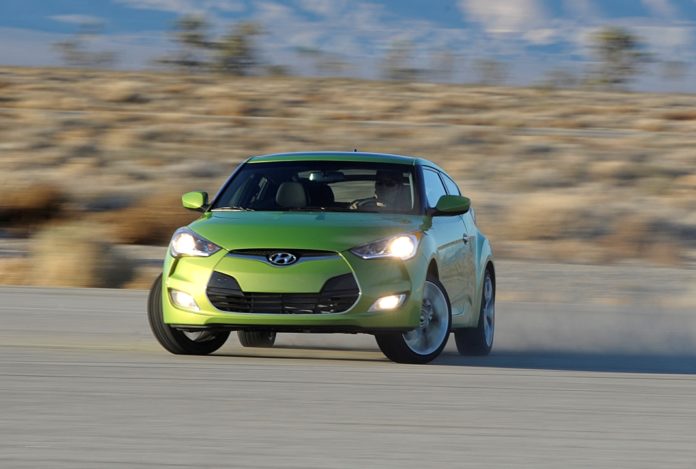

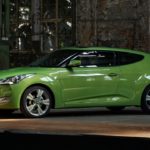
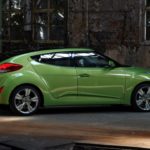

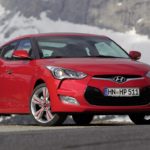
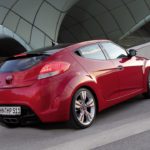
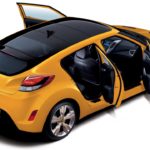
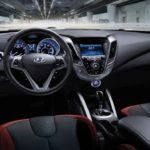
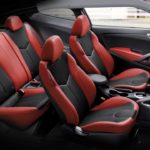
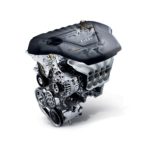

























Recent Comments